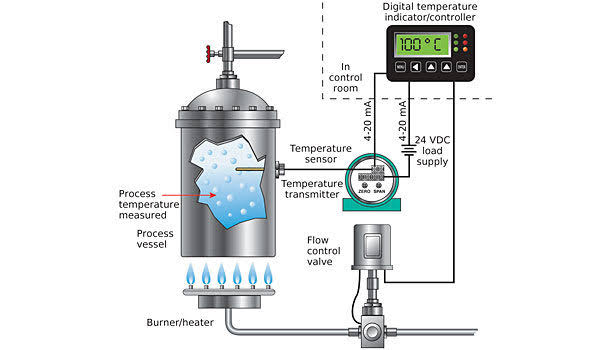What Are The Advances In Temperature Calibration Procedures

Calibrating a measurement instrument involves making a documented comparison between it and a traceable reference device.
The pharmaceutical and biosciences sectors frequently need to calibrate temperature instruments regularly for critical activities. To perform calibration, a process must typically be stopped every six months or so to remove and replace an instrument. The instrument must then be taken to a lab, where it may be found to be calibrated correctly.
All sensors have to be calibrated eventually. This calls for labour-intensive and error-prone removal of the sensor from the process. The main issue is that most sensors require the cables to be disconnected while the sensor is removed and reconnected after calibration. Connect with professional thermal calibration services for a perfect solution.
Although the process is very straightforward, wiring mistakes might happen. In addition, any production environment has challenges with wiring terminations. Usually, such a process takes 30 minutes.
Advancements in Calibration Processes
Recent thermal calibration service innovations have reduced the need for pointless calibrations and sped up the field calibration process. Now that a sensor can determine whether calibration is required, unnecessary lab calibrations are no longer essential. Apply for NABL accreditation and set up NABL accredited calibration labs.
This article analyses the requirement for frequent calibrations in the life sciences sector, the issues involved, and how sensor technology is facilitating and lowering the cost of calibrations.
Why is it so Important?
Quality Risk Management (QRM) is now a mandated regulatory obligation for pharmaceutical companies.
Additionally, according to ISO9001:2008-7.6, GMP, and WHO rules and standards, equipment and instruments must be calibrated or tested against measurement standards that can be traced to regional or global standards at predetermined intervals.
Sensor drift, ageing, and other variables might cause an instrument to deviate over time. Thus, it should be recalibrated every six months to return to its original specifications. Of course, the difference between calibrations must always be kept below the permitted limit. However, with time, there is a greater chance of an undiscovered “out-of-spec” circumstance, which raises the potential of problems with product quality.
Temperature sensors ought to be calibrated after each batch, ideally. Unfortunately, labour and missed productivity are two costs associated with unneeded calibrations, plus there is some danger involved in handling and perhaps destroying the instrument.
Mainly, the calibration cycle is determined statistically based on the cost of performing manual calibrations vs. the risk of the sensor drifting excessively. But, such a strategy is not particularly well suited to the batch nature of bioscience procedures, where batches can run for days or weeks at a time—for instance, in the process of fermentation.
It’s imperative to calibrate!
Calibration for Fermenting Processes
Cell culture is cultivated through fermentation. The cultures ingest a nutritional solution, grow, and produce the intended goods. Typically, fermentation occurs in a succession of bioreactors that are jacketed to either chill or heat, depending on the reaction’s needs.
Three typical fermentation batch procedures are as follows:
- single batch (1- 2 weeks)
- intermittent harvest/fed-batch (2-3 weeks)
- continuous batch (harvesting is done without shutting down the process)
In fermentation operations, temperature is the most crucial measurable parameter. Unfortunately, an undetected out-of-spec temperature sensor might ruin an entire batch, costing several million dollars in spoiled goods because batches can persist for weeks or even months.
Advancements in Temperature Calibration
Let’s have a look at a few recent advancements that can help with these problems.
Self-Monitoring Sensors
The most recent innovations for high accuracy baseline incorporated into the temperature sensor itself are self-calibrating temperature sensors. They each have a physical fixed point (known as the Curie Point) that is unique to all of the same type of material. This serves as the material’s reference value that the sensor compares to the actual RTD temperature sensor. The sensor is automatically calibrated whenever a cooling phase starts. The gadget delivers an alarm or error message that is also shown via LED if the measured deviation is outside of predetermined limits.
RTD Sensors
RTD sensors with a feature that does not require disconnecting wires while removing the sensor are yet another new invention. The sensor can be removed with just a quarter-turn of the sensor’s top by the technician. Calibration time is reduced in half by doing away with the requirement to disconnect and reconnect the wiring. It takes roughly 15 minutes to complete a calibration.
Conclusion
Recent innovations in thermal calibration services, such as the use of self-calibrated sensors and RTDs, lower the possibility of drift-related process errors, which could result in expensive production losses. In some circumstances, it might enable a facility to lessen the number of manual calibration intervals, enabling higher output.
Asset management software can read the electronically transmitted calibration data. Additionally, it makes it possible to generate an auditable certificate of calibration automatically.
When it comes to competence, NABL establishes trust and quality for laboratories. Contact us for more information on NABL-accredited calibration labs.




